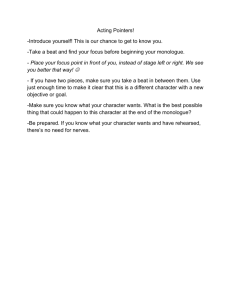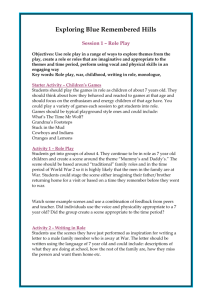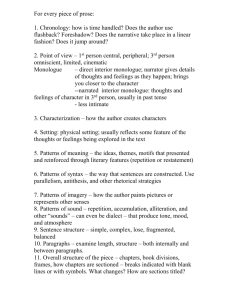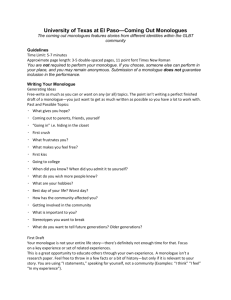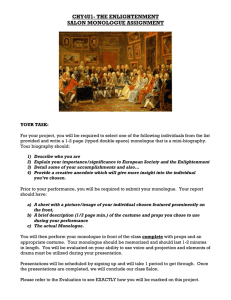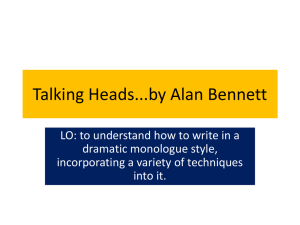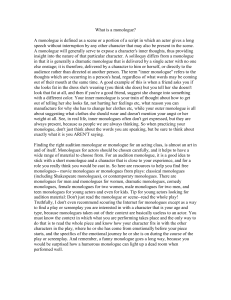Free or public domain monologue sites:
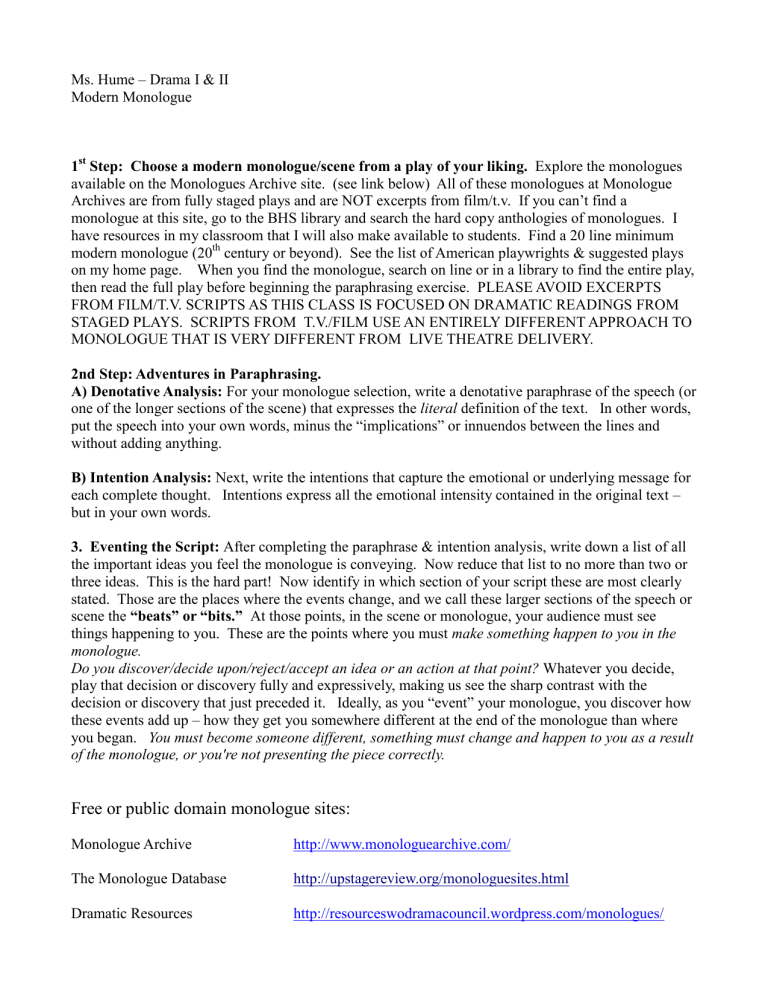
Ms. Hume – Drama I & II
Modern Monologue
1 st
Step: Choose a modern monologue/scene from a play of your liking. Explore the monologues available on the Monologues Archive site. (see link below) All of these monologues at Monologue
Archives are from fully staged plays and are NOT excerpts from film/t.v. If you can’t find a monologue at this site, go to the BHS library and search the hard copy anthologies of monologues. I have resources in my classroom that I will also make available to students. Find a 20 line minimum modern monologue (20 th
century or beyond). See the list of American playwrights & suggested plays on my home page. When you find the monologue, search on line or in a library to find the entire play, then read the full play before beginning the paraphrasing exercise. PLEASE AVOID EXCERPTS
FROM FILM/T.V. SCRIPTS AS THIS CLASS IS FOCUSED ON DRAMATIC READINGS FROM
STAGED PLAYS. SCRIPTS FROM T.V./FILM USE AN ENTIRELY DIFFERENT APPROACH TO
MONOLOGUE THAT IS VERY DIFFERENT FROM LIVE THEATRE DELIVERY.
2nd Step: Adventures in Paraphrasing.
A) Denotative Analysis: For your monologue selection, write a denotative paraphrase of the speech (or one of the longer sections of the scene) that expresses the literal definition of the text. In other words, put the speech into your own words, minus the “implications” or innuendos between the lines and without adding anything.
B) Intention Analysis: Next, write the intentions that capture the emotional or underlying message for each complete thought. Intentions express all the emotional intensity contained in the original text – but in your own words.
3. Eventing the Script: After completing the paraphrase & intention analysis, write down a list of all the important ideas you feel the monologue is conveying. Now reduce that list to no more than two or three ideas. This is the hard part! Now identify in which section of your script these are most clearly stated. Those are the places where the events change, and we call these larger sections of the speech or scene the
“beats” or “bits.”
At those points, in the scene or monologue, your audience must see things happening to you. These are the points where you must make something happen to you in the monologue.
Do you discover/decide upon/reject/accept an idea or an action at that point?
Whatever you decide, play that decision or discovery fully and expressively, making us see the sharp contrast with the decision or discovery that just preceded it. Ideally, as you “event” your monologue, you discover how these events add up – how they get you somewhere different at the end of the monologue than where you began. You must become someone different, something must change and happen to you as a result of the monologue, or you're not presenting the piece correctly.
Free or public domain monologue sites:
Monologue Archive
The Monologue Database
Dramatic Resources http://www.monologuearchive.com/ http://upstagereview.org/monologuesites.html http://resourceswodramacouncil.wordpress.com/monologues/
